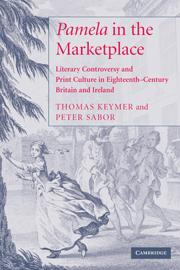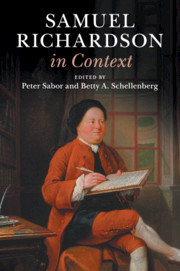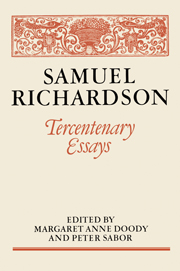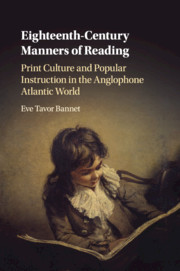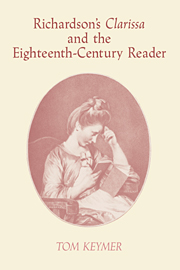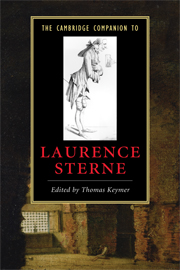'Pamela' in the Marketplace
Samuel Richardson's Pamela (1740) is often regarded as the first true novel in English and a landmark in literary history. The best-selling novel of its time, it provoked a swarm of responses: panegyrics and critiques, parodies and burlesques, piracies and sequels, comedies and operas. The controversy it inspired has become a standard point of reference in studies of the rise of the novel, the history of the book and the emergence of consumer culture. In the first book-length study of the Pamela controversy since 1960, Thomas Keymer and Peter Sabor offer a definitive account of the novel's enormous cultural impact. Above all, they read the controversy as a market phenomenon, in which the writers and publishers involved were competing not only in struggles of interpretation and meaning but also in the larger and more pressing enterprise of selling print.
- A major account of a landmark literary controversy of the eighteenth century
- Provides a compelling case study in the rise of the novel genre and the emergence of the marketplace for print
- Full of new discoveries and research - the definitive account of this important development for the novel
Reviews & endorsements
"A very readable book...giving an interesting picture of Grub Street, the sometimes-cutthroat world of publishing, theater before and after the Licensing Act, issues of social rank and class, and English popular culture of the time." -- Choice
"As befits the topic, Pamela in the Marketplace is beautifully produced, its typeface and many illustrations crisp on bright white paper. Highly recommended for Richardson buffs and all those intrigued by the power of the marketplace to spin events right out of an author's control, even his." - Jocelyn Harris, University of Otago, New Zealand
"The book is witty, lively, and studded with wonderful cameo portraits...it is an important as well as a well-researched and well-written book."
Brean S. Hammond, University of Notthingham
"This new book by Messrs. Keymer and Sabor is a valuable companion to their The Pamela Controversy: Criticisms and Adaptations of Samuel Richardson's Pamela, 1740-1750 (Pickering and Chatto, in six volumes, 2001), and it splendidly exemplifies what can be accomplished in the relatively new discipline of the history of the book..."
--James McLaverty, Keele University, The Scriblerian
Product details
April 2009Paperback
9780521110181
308 pages
229 × 152 × 18 mm
0.46kg
14 b/w illus.
Available
Table of Contents
- Introduction
- 1. 'The selling part': publication, promotion, profits
- 2. Literary property and the trade in continuations
- 3. Counter-fictions and novel production
- 4. Domestic servitude and the licensed stage
- 5. Pamela illustrations and the visual culture of the novel
- 6. Commercial morality, colonial nationalism, and Pamela's Irish reception
- Afterword
- Appendix. A chronology of publications, performances and related events to 1750
- Select bibliography
- Index.

